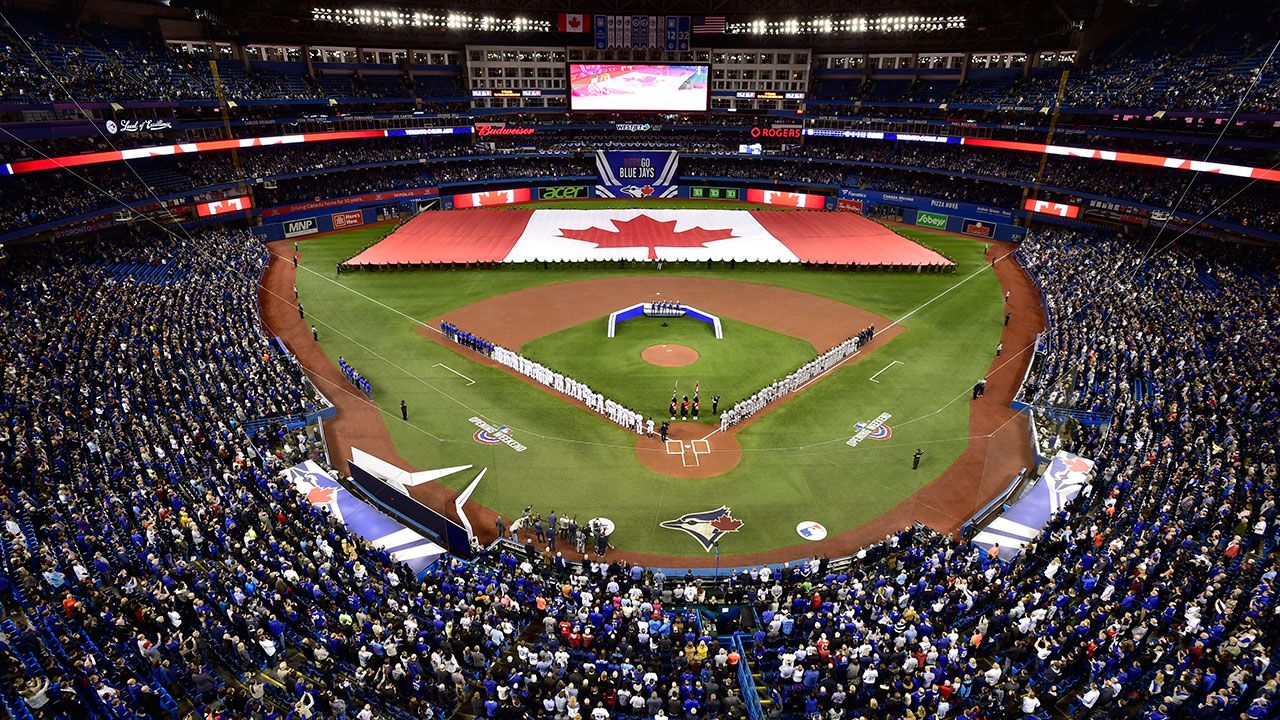TORONTO — The Toronto Blue Jays became the latest big-league team to unveil plans for extended protective netting, a response to a spate of troubling incidents around the majors this season in which spectators have been struck by foul balls.
Exact specifications are still in the works, but the club committed to having mesh running farther down the baselines at both Rogers Centre and Dunedin Stadium, the team’s spring facility currently undergoing a substantial renovation, in time for the 2020 season.
A late May incident in which a little girl was struck by a foul ball off the bat of Cubs outfielder Albert Almora Jr. at Minute Maid Park in Houston has been a catalyst for the latest push to improve safety at ballparks. The Chicago White Sox have already implemented foul-pole-to-foul-pole mesh, while the Washington Nationals ran theirs much further down the baselines
The Pittsburgh Pirates, Los Angeles Dodgers and Baltimore Orioles have also said that they’ll extend their netting, while the Texas Rangers will do the same at their new stadium scheduled to open next season.
The Blue Jays have been working on plans since the incident in Houston but wanted to first work through the logistics of how to run additional netting around the curved seating bowl without hampering sightlines.
There have been a number of close calls at Rogers Centre over the past few seasons, including one May 10, when a Vladimir Guerrero Jr. foul liner with an exit velocity of 114 m.p.h. struck a girl seated well down the third-base line in the abdomen.
Fortunately, she was fine, but afterwards Guerrero told Sportsnet that “definitely, I’m in favour of extending the netting all the way down the foul line. We, as ballplayers, don’t want to see anyone get hurt. It’s going to happen that we hit foul balls like that. But I think the major leagues should extend the nettings all the way to the foul poles. That way you can protect the fans a lot better.”
The commissioner’s office last amended its netting requirements ahead of the 2018 season, requiring meshing to run at least between the outer ends of both dugouts. At that time, the Blue Jays extended their screen around home plate by 150 per cent, the net behind home plate rising from the previous 18 feet to 28 feet above the playing surface, while the netting over the dugouts standing 26 feet above the turf.
That majors-wide mandate came after a young girl at Yankee Stadium suffered facial fractures and bleeding on the brain after being struck by a 105-m.p.h. rocket off the bat of Todd Frazier in September 2017. Days before the incident in New York, a fan in Toronto was fortunate to escape with only a welt to his abdomen after Salvador Perez’s bat was sheared off at the handle, sending the barrel hurtling a couple dozen rows into the seats on the third-base side of the field.
[snippet]
In June, Blue Jays outfielder Randal Grichuk recalled a couple of gruesome incidents he saw in the minor-leagues and told Sportsnet, “for people’s safety, you should do it, get the most netting you can.”
“A lot of fans have said they don’t want the netting, they want to be able to get autographs, get foul balls, interact with players a little more and don’t want to have to look through a net,” he continued. “But everybody doesn’t want it until it happens to them and they get hit. Let’s be on the safe side and extend the netting and not have to worry about things like what happened in Houston.”
While extended netting will make Rogers Centre safer, running more mesh down the lines at Dunedin Stadium is even more crucial given how tight to the field the worked stands will be.
Amid higher pitching velocities, harder contact coming off bats and more distracted spectators, the possibility for danger has only increased.
The NHL mandated protective mesh above the glass behind the nets after 13-year-old Brittanie Cecil was struck by a deflected shot at a Columbus Blue Jackets game March 16, 2002 and died two days later. Shame on Major League Baseball if takes a similar incident for it to act uniformly, especially given the far-higher frequency with which balls end up in the stands.
“We believe that fans should feel protected and secure during our games,” Andrew Miller, the club’s executive vice-president of business operations, said in a release. “As fans and followers of the game, it is vitally important for us to preserve and enhance the live baseball experience, while also ensuring everyone who visits our ballparks can do so safely.”
[relatedlinks]










